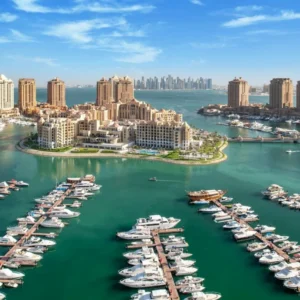Denmark has long been celebrated for its high quality of life, innovative economy, and progressive social welfare system. For skilled professionals around the world, the dream of living and working in the “happiest country on earth” may seem out of reach—until you learn about the Danish Green Card Scheme. Although it closed in 2016, this pioneering program paved the way for today’s streamlined immigration pathways, offering valuable lessons for anyone seeking to make Denmark their new home. In this post, we’ll explore:
- What the Danish Green Card Scheme was
- Who could apply and how it worked
- Key benefits and outcomes
- How it compares to current routes
- Tips for success and next steps
By the end, you’ll have a clear understanding of whether Denmark is right for you—and the practical steps to get started.
What Was the Danish Green Card Scheme?
In 2009, Denmark introduced the Green Card Scheme to attract highly skilled individuals from outside the EU/EEA. Instead of tying applications to a specific job offer, the scheme honored points-based systems—similar to Canada and Australia—by evaluating education, language proficiency, work experience, age, adaptability, and other factors. Applicants needed a minimum point total to qualify for a two-year residence—and work—permit in Denmark (Ny i Danmark, 2016).
Key highlights:
- Points System: Applicants earned up to 100 points across six categories.
- Open Labour Market Access: Holders could work for any employer in any sector.
- Family Reunification: After 6 months in Denmark, cardholders could bring close family members.
- Path to Permanent Residency: Continuous residence increased eligibility for permanent status.
The scheme officially closed to new applicants on November 1, 2016, following an evaluation that pointed to challenges in retention and integration (Danish Ministry of Immigration, 2016).
Why It Mattered: Key Benefits for Professionals
- Flexibility in Job Search
- Unlike employer-specific visas, the Green Card Scheme allowed you to arrive in Denmark, explore job opportunities, and accept the best fit.
- Fast-Track to Opportunities
- With two years guaranteed residence, you had time to network and prove your skills in Denmark’s dynamic sectors—especially IT, engineering, and life sciences.
- Family-Friendly Policies
- The ability to reunite with family members early on eased the transition and improved quality of life.
- Integration and Language
- Participants could enroll in Danish language classes, boosting integration and career prospects.
How the Points Were Calculated
| Criterion | Maximum Points | Key Requirements |
|---|---|---|
| Education | 30 | Recognized Bachelor’s, Master’s, or PhD from accredited institutions (Source) |
| Language Proficiency | 20 | Danish language tests or English proficiency (TOEFL/IELTS) |
| Work Experience | 25 | Minimum 2 years of relevant post-qualification experience |
| Age | 15 | Higher points for younger applicants (18–35 years) |
| Adaptability | 10 | Previous stays in Denmark or family ties |
| Salary Potential | 10 | Expected salary based on Danish labor market statistics |
This balanced approach ensured that candidates had both the academic credentials and the real-world experience to thrive in Denmark.
From Green Card to Permanent Residency: The Journey
- Arrival and Job Search
- Once in Denmark, cardholders often leveraged job fairs, recruitment agencies, and online platforms like LinkedIn and Jobindex.
- Secure Employment
- Finding a position was easier in sectors with high demand, such as software development, pharmaceuticals, and renewable energy.
- Renewal and Transition
- Approaching the two-year mark, many cardholders switched to the “Pay Limit Scheme” or “Positive List” routes, which still exist today (Ny i Danmark).
- Permanent Residency Application
- After 4 years of continuous, lawful residence, applicants could apply for permanent residency, provided they met language and self-sufficiency criteria.
Why the Scheme Was Phased Out—and What Replaced It
Despite its innovations, the Green Card Scheme faced criticisms:
- Low Retention: Many participants left before gaining permanent status.
- Integration Challenges: Insufficient language ability hampered long-term success.
In response, Denmark shifted to more targeted routes:
| Scheme | Launched | Focus |
|---|---|---|
| Pay Limit Scheme | 2016 | Highly paid positions above a salary threshold |
| Positive List Scheme | 2016 | Professions with demonstrated labor shortages |
| Researcher Scheme | 2018 | Academic researchers and scientific staff |
| Start-up Denmark | 2018 | Entrepreneurs with innovative business ideas |
While these pathways demand a specific job offer or project, they have streamlined requirements and clearer retention goals.
Danish Green Card Scheme vs. Today’s Options
| Feature | Green Card Scheme | Pay Limit Scheme | Positive List Scheme |
|---|---|---|---|
| Job Offer Required | No | Yes | Yes |
| Points-Based | Yes | No | No |
| Salary Threshold | N/A | DKK 449,100 per year (2025 level) | Depends on collective agreements |
| Family Reunification | After 6 months | Immediately upon approval | Immediately upon approval |
| Flexibility | Very high | Moderate | Moderate |
| Targeted Professions | Broad | All high-paid | IT, engineering, healthcare, etc. |
Is Denmark Right for You? 5 Key Considerations
- Your Professional Profile
- Do you hold in-demand skills or a high salary offer? If yes, the Pay Limit or Positive List routes may suit you better today.
- Language and Culture
- While many Danes speak English, Danish proficiency accelerates integration and opens more doors (Study in Denmark, 2024).
- Cost of Living
- Copenhagen consistently ranks among Europe’s most expensive cities. Factor housing, healthcare, and transportation into your budget.
- Quality of Life
- Universal healthcare, free education, and strong work-life balance contribute to Denmark’s high happiness scores (OECD Better Life Index, 2023).
- Long-Term Goals
- Are you aiming for citizenship? Permanent residency requires a minimum of 4–5 years of residence plus language and civic knowledge tests.
Tips for a Successful Application
- Prepare Early
- Gather diplomas, transcripts, and language certificates well in advance.
- Network Remotely
- Use LinkedIn, Danish alumni groups, and professional associations to secure job leads.
- Master Danish Basics
- Even rudimentary Danish (A1–A2 level) impresses employers and locals.
- Seek Professional Advice
- Immigration lawyers or relocation consultants can help navigate the nuances of each scheme.
- Plan Finances
- Show proof of funds to cover living expenses for at least 3 months upon arrival.
Frequently Asked Questions
Q: Can I change jobs once I have a work permit?
A: Yes—under the original Green Card Scheme, you had full labor market access. Today’s routes may require notifying authorities or adjusting your permit conditions.
Q: How long does processing take?
A: Expect 1–3 months for a complete application under modern schemes, depending on workload and completeness of documents.
Q: Are family members covered?
A: Most routes allow spouses and children to join you—sometimes immediately upon approval, sometimes after a waiting period.
Conclusion: Charting Your Path to Denmark
The Danish Green Card Scheme revolutionized how Denmark welcomed global talent, proving that flexibility and trust can yield mutual growth. While it’s no longer open, its legacy lives on in today’s tailored pathways—each designed to balance Denmark’s labor market needs with your professional ambitions.
Whether you’re a software engineer eyeing Copenhagen’s tech scene or a biotech researcher targeting Aarhus, Denmark offers a world-class environment that values innovation, sustainability, and quality of life. Start by evaluating which scheme aligns with your profile, gather your documents, and dive into Danish culture early—your new adventure awaits!
Ready to take the leap?
• Explore the Pay Limit Scheme
• Check if your profession is on the Positive List
• Join online communities like “Expats in Denmark” on Facebook to ask real people about life in Denmark
Pack your bags, brush up on your Danish, and prepare to unlock your own ticket to life—and work—in Denmark!





